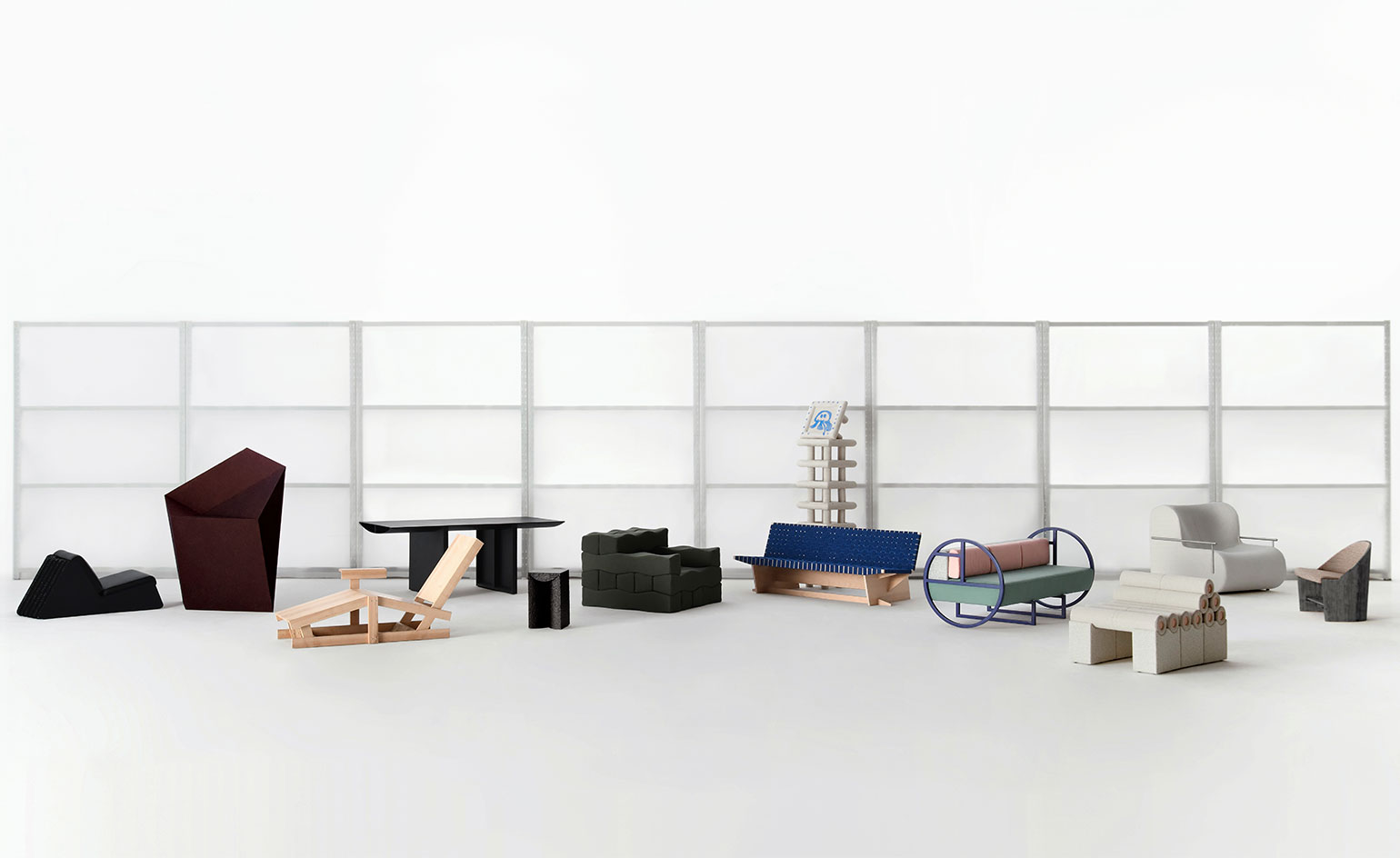
This year, for its third annual edition, Designew, a research and development platform in China for young designers and local manufacturers, invited the industry's most forward-thinking practitioners to explore the theme of Correct/Incorrect, which could be interpreted as ‘Tolerating Errors'.
An error is defined as a deviation from an optimal state or the common standard of operation; either human mistakes erring from traditional standards or the inevitable material defects or imperfections in craftsmanship during manufacturing. ‘Traditionally, designers strive to avoid mistakes and eliminate the possibility of error in design production. I hope that by reflecting and reconstructing the design and manufacturing processes, the negative connotation of “errors” will take on new meanings,’ Designew’s curator and participating designer Mario Tsai explains.
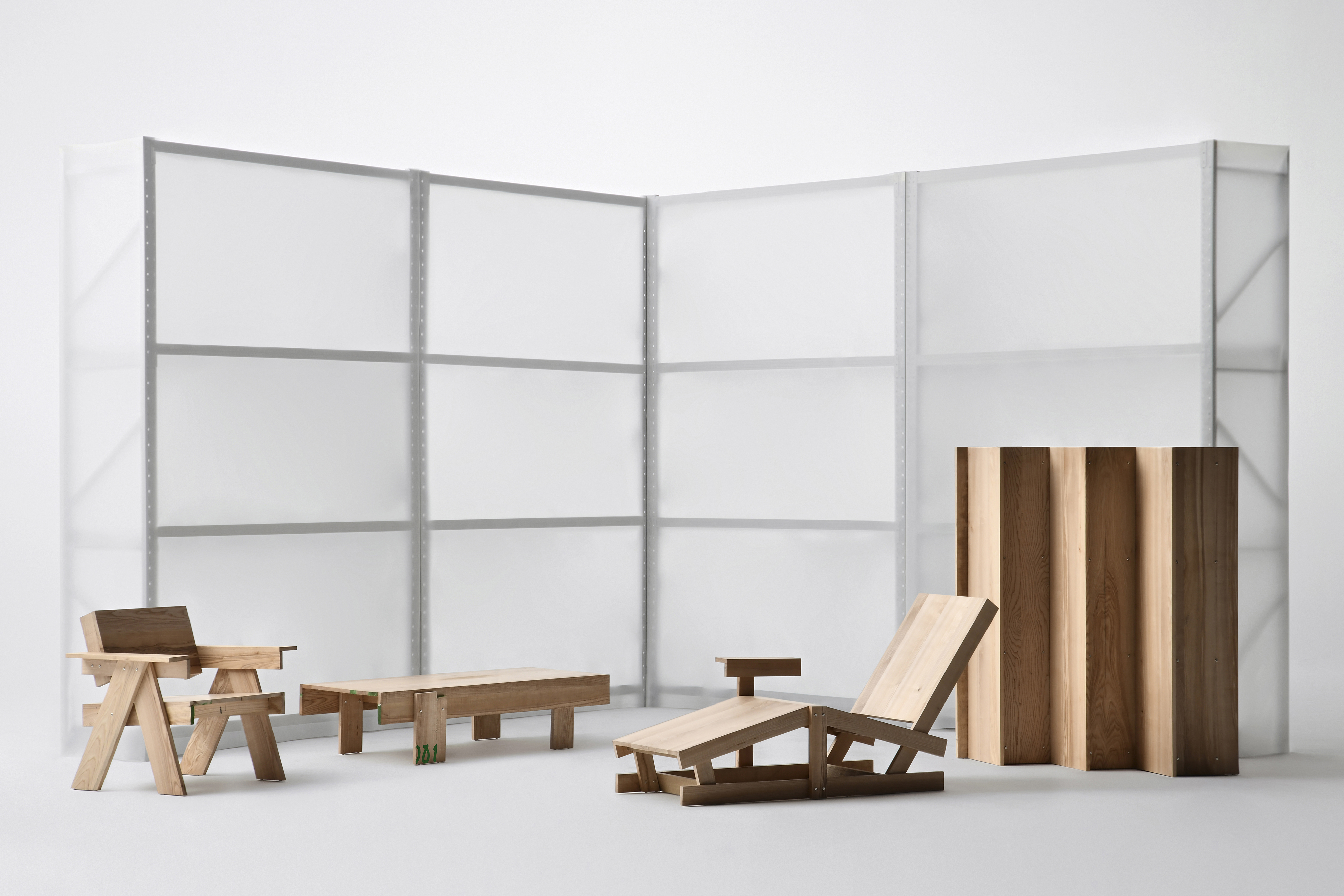
‘Rough’ by Hangzhou-based designer Mario Tsai. The guiding principle of the collection begins with the most fundamental functions and users’ desires in mind
In design and manufacturing, ‘roughness’ stands in opposition to ‘refinement’. In this project, roughness is no longer regarded as a ‘mistake’, says Tsai. ‘I want to investigate the characteristics of “roughness” in an objective and rational manner; not only from the standpoint of material usage and production, but also in how to manifest its unique beauty.'
The guiding principle of the ‘Rough’ collection begins with the most fundamental functions and users’ desires in mind. The bookshelf, for example, is a basic module composed of three standard sizes of wooden panels that can be easily built and extended; production marks and blemishes on the wood are kept for their individuality.
Turning errors into design

‘Endless Wave’ by Hangzhou-based designer Li Le. The design mimics the periodicity, symmetry and movement of the natural phenomena to create a wave-shaped modular superposition sofa system
According to Li Le, a Hangzhou-based designer, ‘the wisdom of “Tolerating Errors” lies in “tolerance”; confronting yourself and the external world with a tolerant attitude allows you to discover more possibilities from the negative attribution.’ Beginning with the common assembly error of ‘misalignment’, Li discovered harmony with nature.
‘Endless Wave’ mimics the periodicity, symmetry and movement of the natural phenomena to create a wave-shaped modular superposition sofa system. The oversized 'building blocks' form an infinitely spliceable structure.
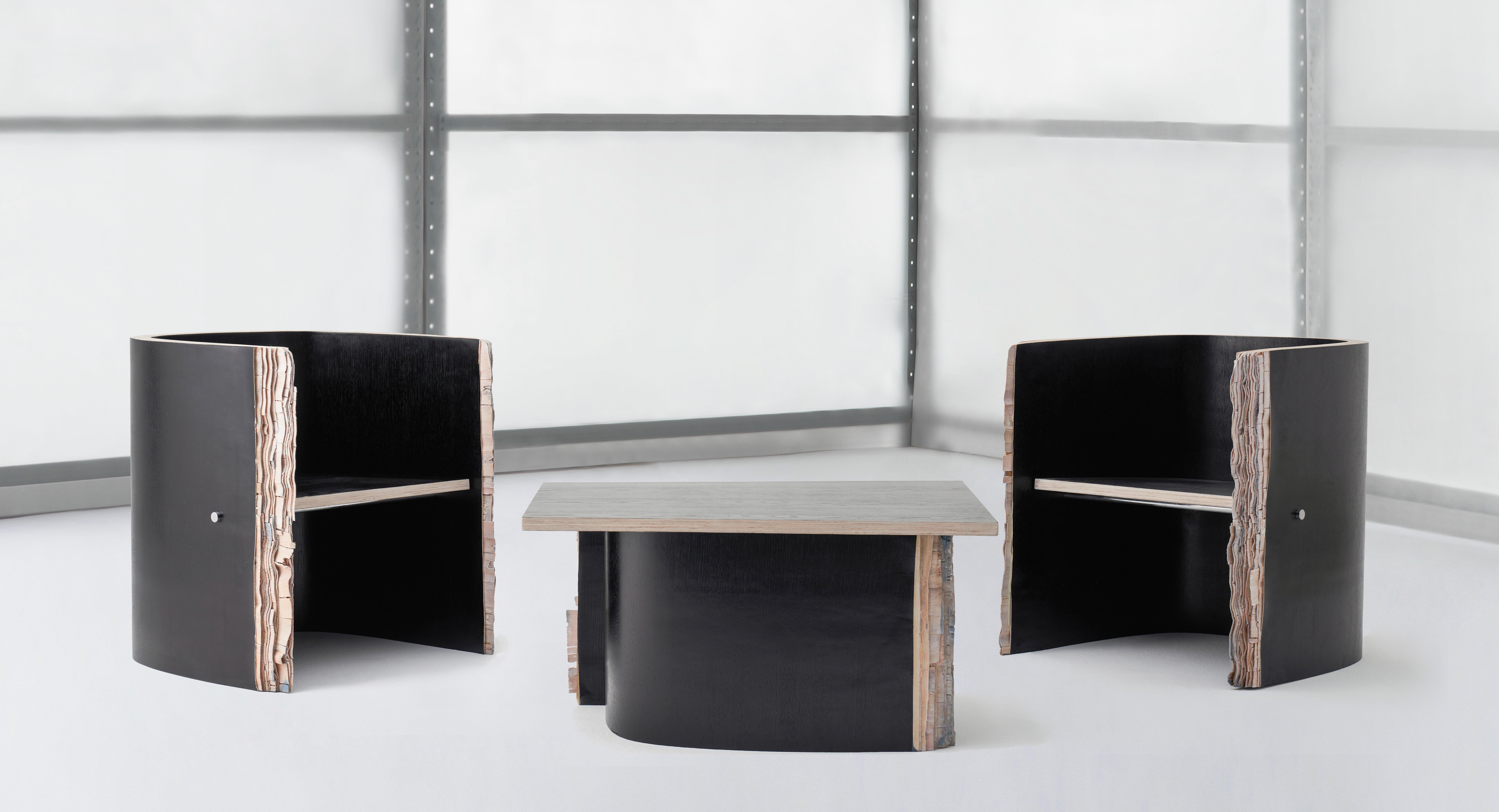
‘Veneer Bleed’ by Shanghai-based studio Studio KAE. By incorporating the 'bleed' into the collection, it has been able to add a ‘signature' to mass-produced pieces
Shanghai-based Studio KAE‘s candid approach turns ‘errors’ into simple elegance. In printing, ‘bleed’ refers to printing that goes beyond the edge of the sheet where it will be trimmed. The same applies to furniture-making when hot-moulding pressed plywood is employed. By incorporating the 'bleed' in its collection ‘Veneer Bleed’, the studio has been able to add a ‘signature' to mass-produced pieces by setting a higher tolerance rate for processing errors, allowing the mould to produce the same design with its different and unique 'error' as details.
Receive our daily digest of inspiration, escapism and design stories from around the world direct to your inbox.
The seat back is made by pressing multiple sets of veneer from a single mould simultaneously; the veneers are in different lengths and only partially glued, and the plywood sheet has an irregular tail end. 'It was difficult to persuade the workmen to keep the “defects” that the factory quality inspection standards would normally reject,’ say co-founders Keren Wang and Zhekai Zhang. The result is far from ‘perfect’, but ‘tolerable’, given that Shanghai was under lockdown during the design development and prototype period.
A platform for global designers collaborating with Chinese manufacturers
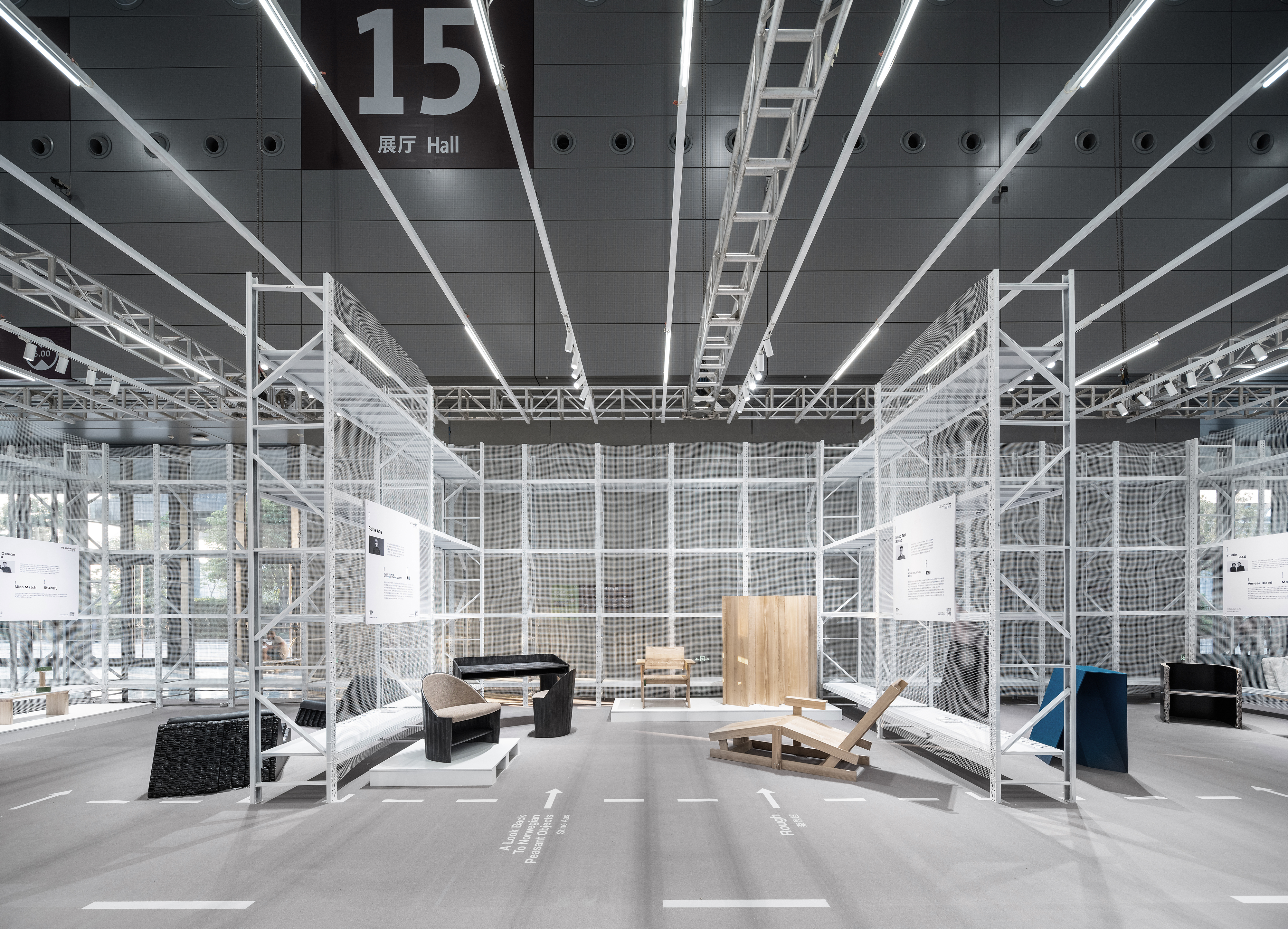
Overview of the exhibition, designed by Studio 10
This edition of Designew involved three international design studios in addition to 11 local ones, pairing up with seven local manufacturers to experiment on new concepts and production methods. The platform is welcoming overseas creatives for the first time. ‘We appear to be estranged from the international community as a result of the pandemic. We hope that by inviting international designers to join the platform, we can continue the conversation and exchange,’ says Tsai.
It is also the first time the Swiss studio Panter&Tourron have worked with a wood-making manufacturer in China. ‘It was interesting to see how the variety and standards of woods we used differ in different countries and it was stimulating to rethink our design process to these different standards,’ says studio co-founder Stefano Panterotto.
‘Working alongside fellow Chinese colleagues gives us a sense of unity less linked to our geographical upbringing but more related to our shared cross-cultural references,’ adds co-founder Alexis Tourron.
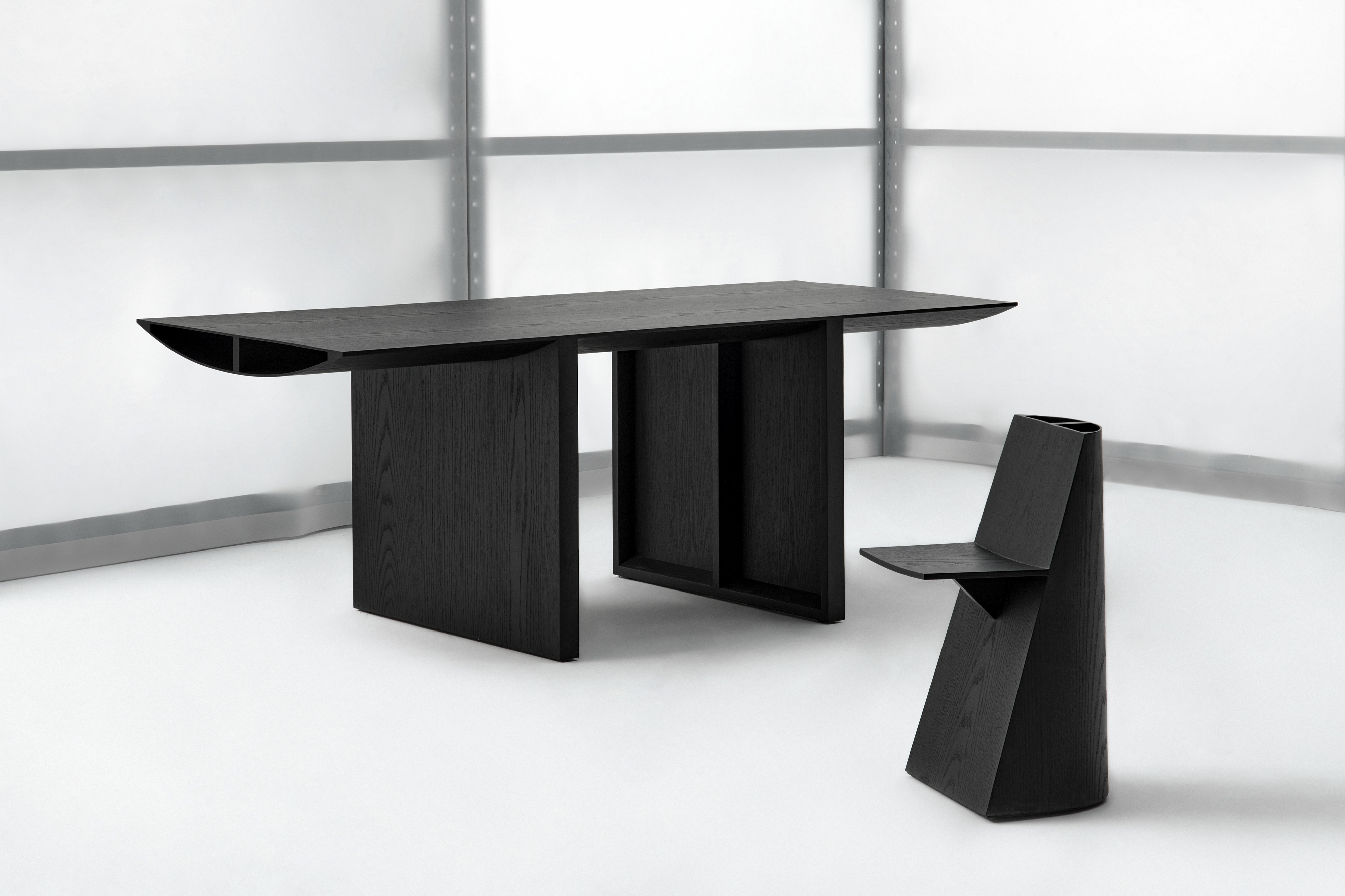
‘Kit’ by Swiss studio Panter&Tourron. The design is reminiscent of a plane wing, with an assembled skeleton of interlocking parts designed to maximise stability
The worlds of collectible and mass-market design frequently employ a lavish amount of raw materials to achieve elemental and monolithic forms; however, this aesthetic runs counter to sustainable efforts that Panter&Tourron is committed to implementing in its work.
‘Kit’ is a collection of voluminous stained ash furniture that uses industry-standard panels and slats and standard bending and cuts to avoid heavy milling or material loss.

‘Reframe’ by Dutch studio BCXSY. The duo chose a recognisable round-shaped curio cabinet and transformed it into a sofa and side tables
BCXSY from the Netherlands began the ‘Reframe’ collection with images that came to mind while thinking about traditional Chinese furniture. Boaz Cohen and Sayaka Yamamoto chose a recognisable round-shaped curio cabinet and transformed it into a sofa and side tables. The outlines of the cabinet are used on both ends of the sofa to create a playful image in which the people sitting on it appear as exhibits on the shelf.
The main challenge for Designew this year is that international designers have been unable to visit China and have had to work with the factories virtually. 'A bit more creative exchange and trial and error in the process may have taken the project even a step further,’ say the duo.
And Tsai agrees: ‘Many ideas are unable to be realised due to a lack of understanding of the facilities and procedures. We attempted to help by acting as a bridge in the process. However, I hope that when travel restrictions are relaxed in the future, designers will join us here in person.’
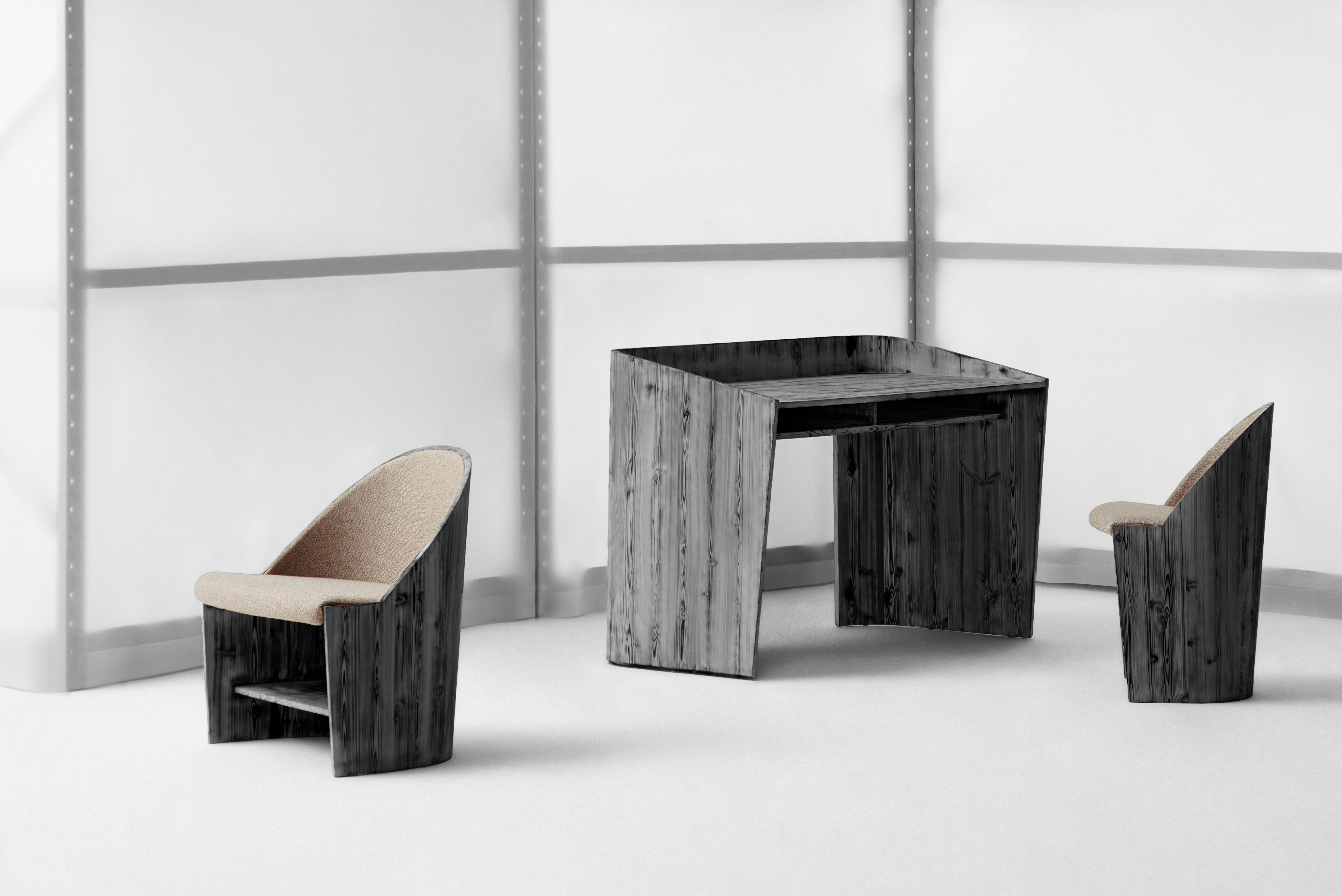
‘A Look Back to Norwegian Peasant Objects’ by Norwegian designer Stine Aas
The 14 collections were released last week at Shenzhen Creative Week (25 – 28 July 2022), in an exhibition designed by Studio 10. ‘We have been debating whether the market's overemphasis on “sophistication” and “precision” would result in an excessive amount of irreversible and unnecessary waste,' says Shi Zhou, Studio 10’s founder.
The sleek space adopted the most common spatial typology in furniture warehouses by introducing a central passageway that connected the aisle-like individual showcases that were partitioned by standardised modular metal shelves on both sides. All materials were recycled or reused when the curtain closed.
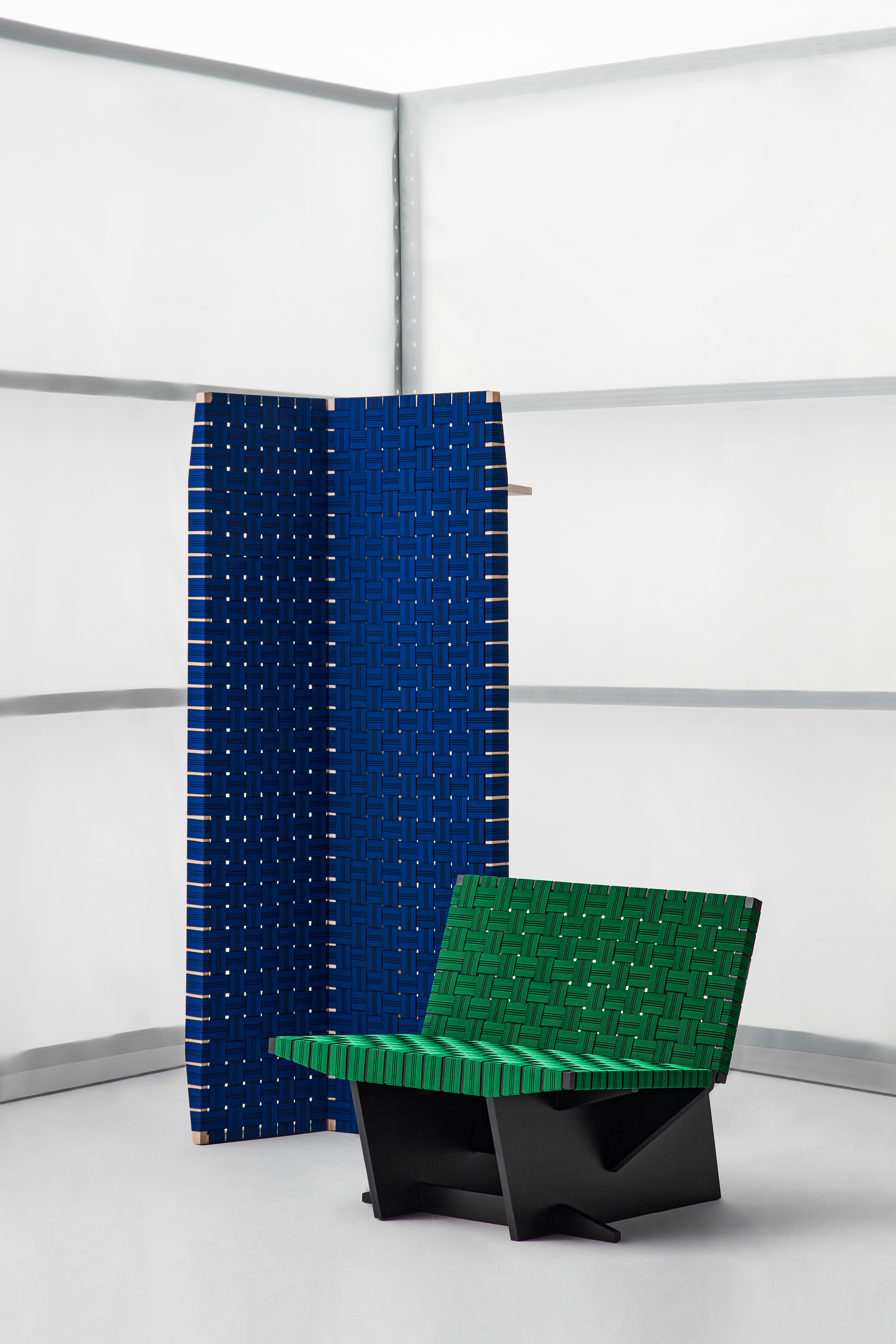
‘Half-Hundred%’ by Guangzhou-based designer Zhou Anbin
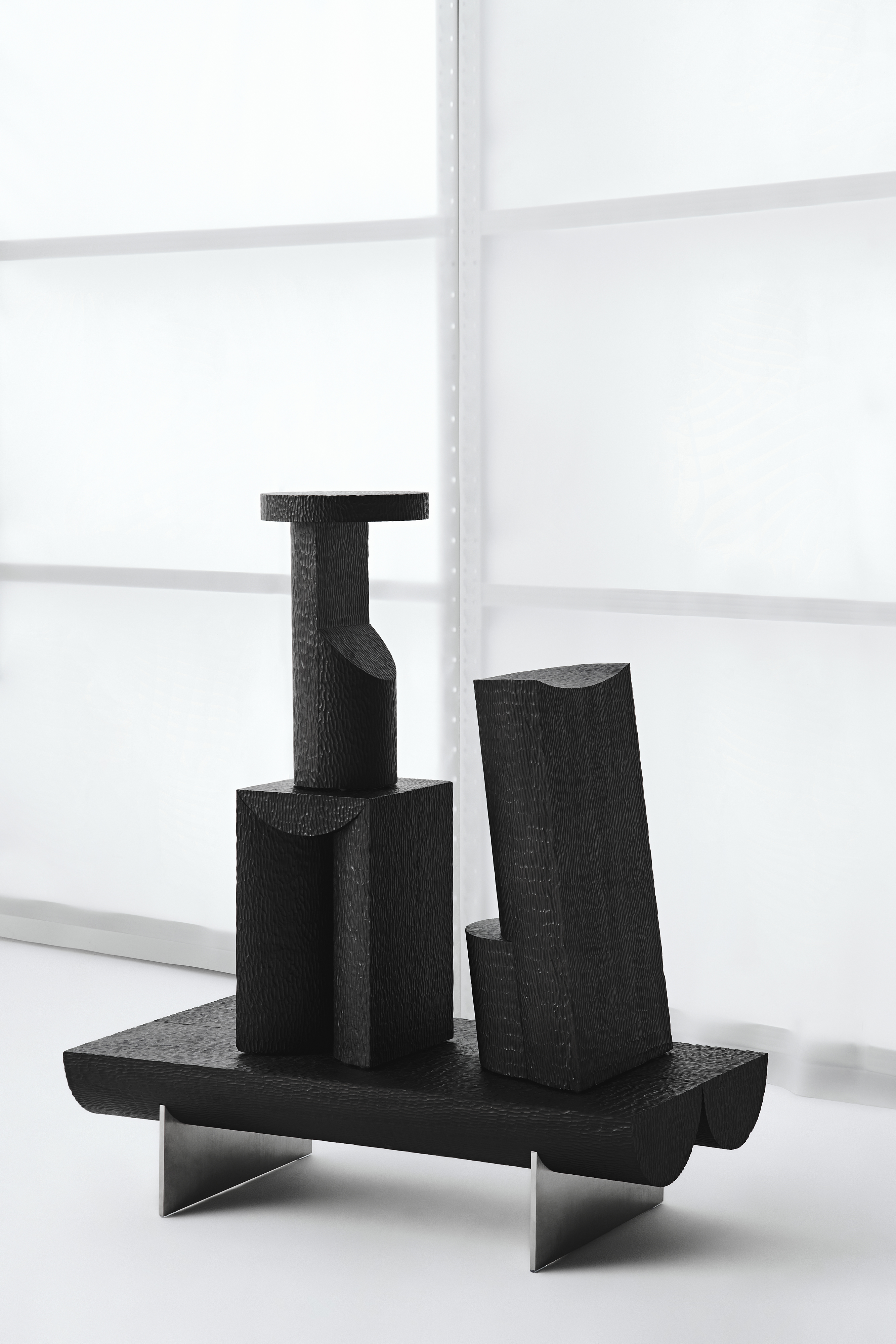
‘Weiman’ by Shanghai-based designer Ren Hongfei
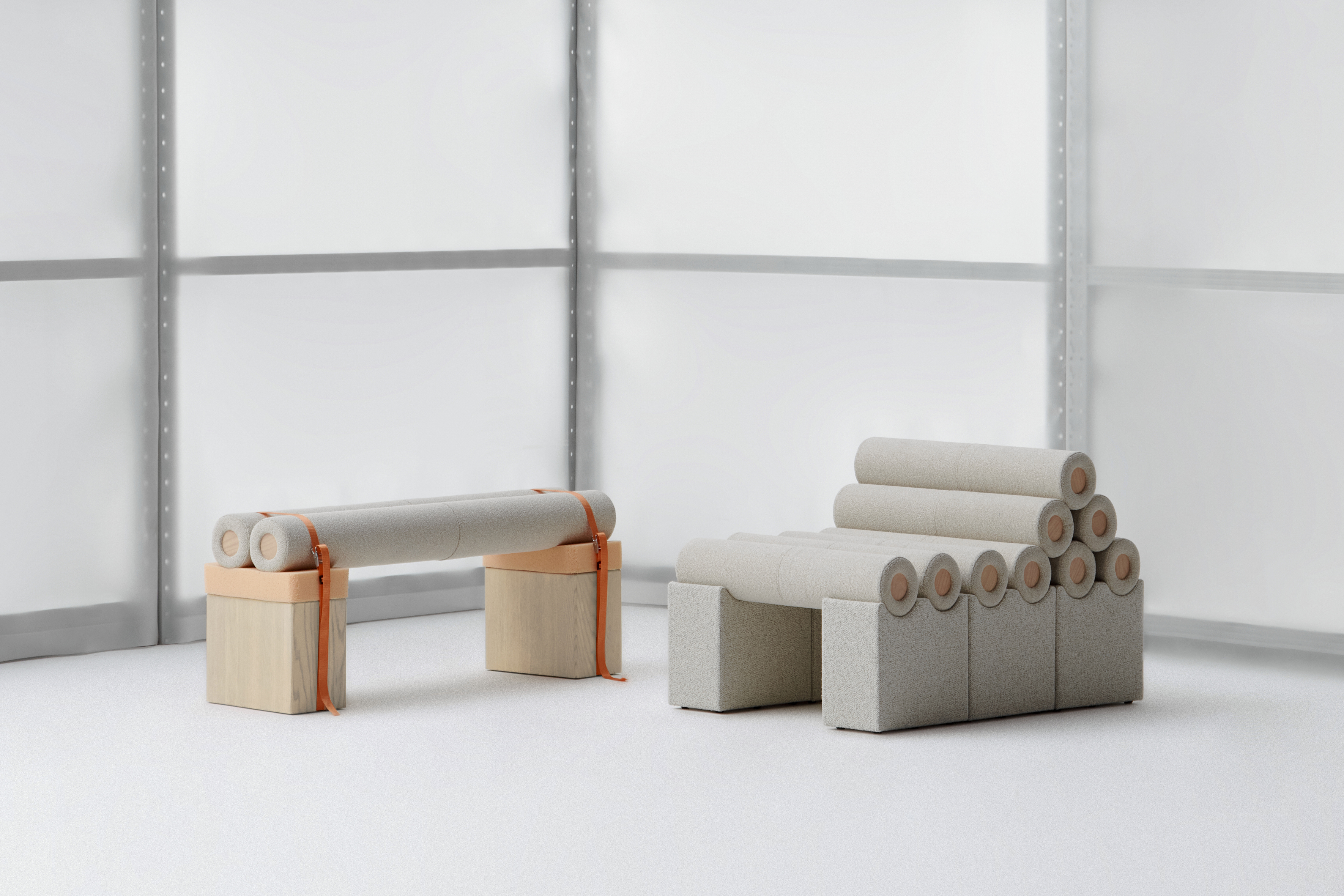
‘SuoFa’ by Ningbo-based studio Atelier JM
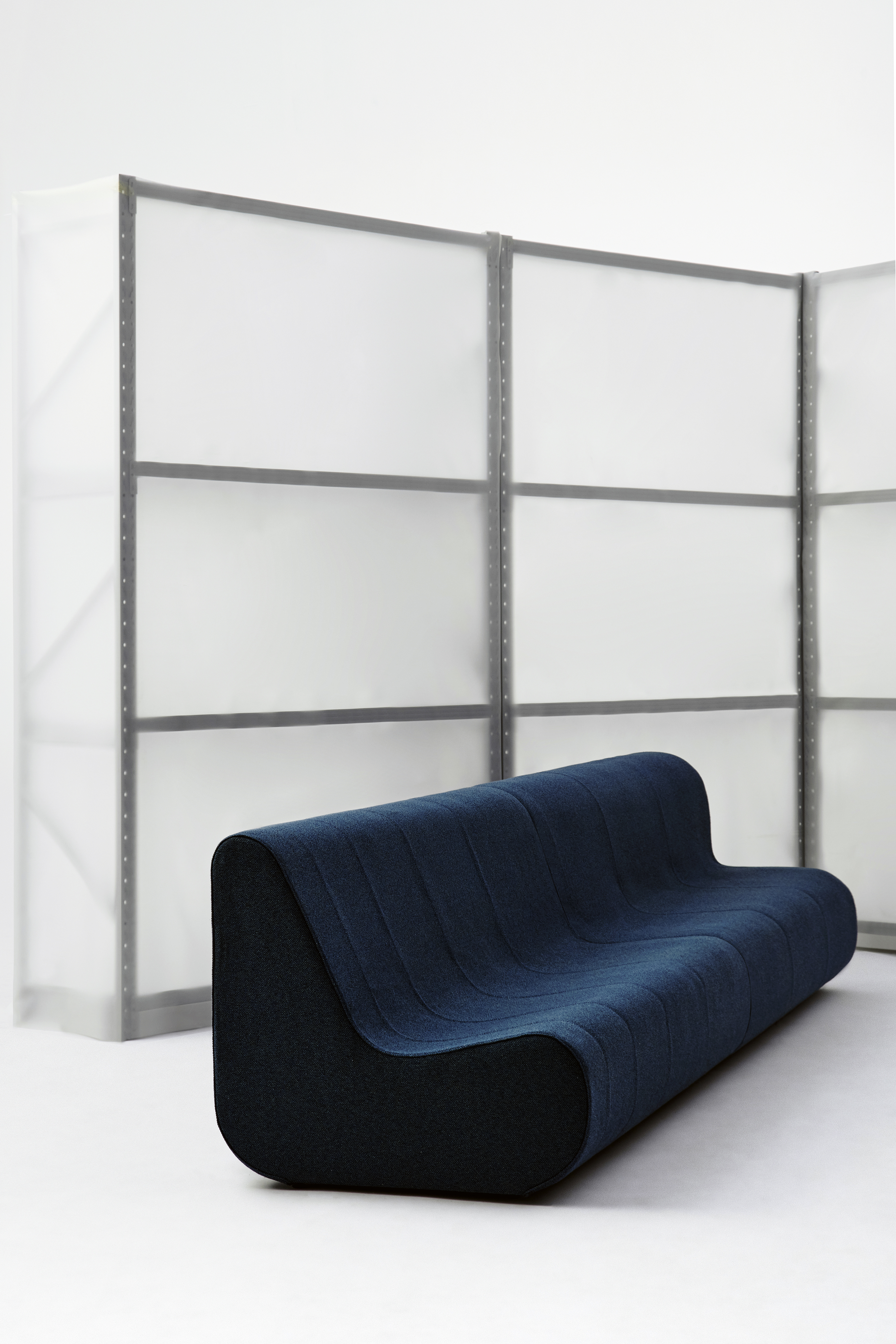
‘Cheng Sofa’ by Hangzhou-based designer Carlos Chen
INFORMATION
Yoko Choy is the China editor at Wallpaper* magazine, where she has contributed for over a decade. Her work has also been featured in numerous Chinese and international publications. As a creative and communications consultant, Yoko has worked with renowned institutions such as Art Basel and Beijing Design Week, as well as brands such as Hermès and Assouline. With dual bases in Hong Kong and Amsterdam, Yoko is an active participant in design awards judging panels and conferences, where she shares her mission of promoting cross-cultural exchange and translating insights from both the Eastern and Western worlds into a common creative language. Yoko is currently working on several exciting projects, including a sustainable lifestyle concept and a book on Chinese contemporary design.
-
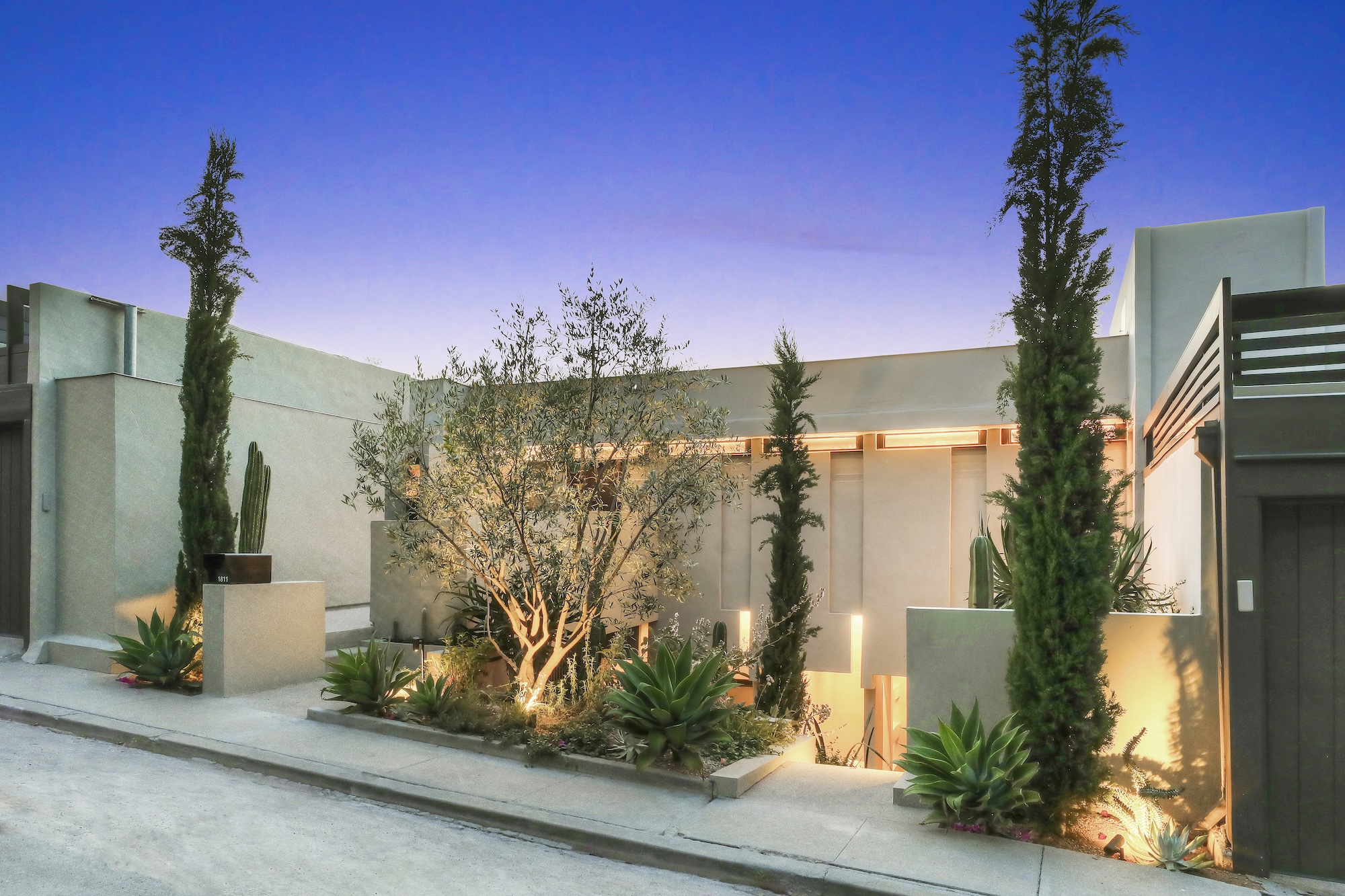 A rare Rudolph Schindler-designed rental just hit the market in Los Angeles
A rare Rudolph Schindler-designed rental just hit the market in Los AngelesThis incredible Silver Lake apartment, designed one of the most famous voices in California modernism, could be yours for $3,675 a month
-
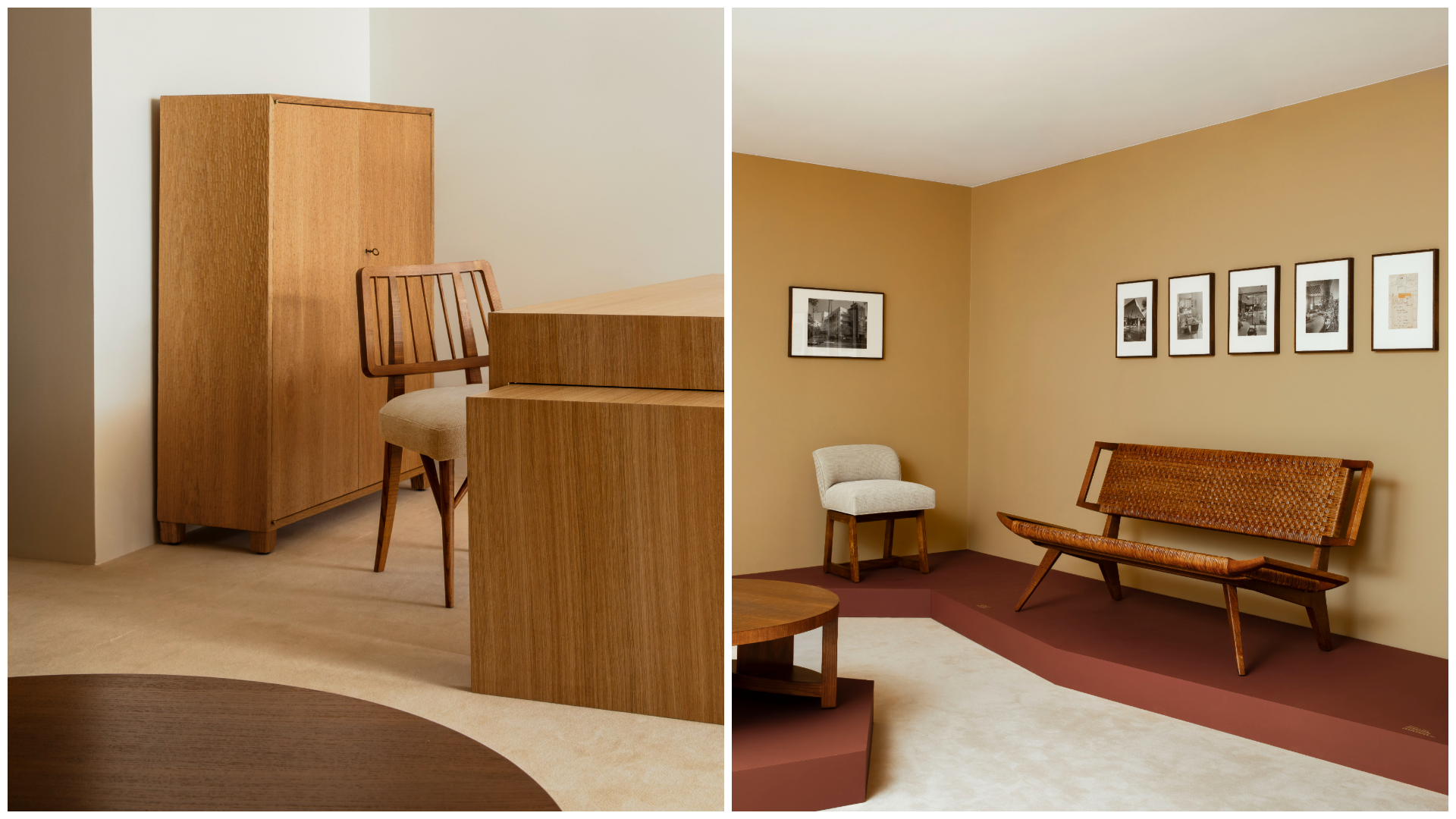 Pierre Yovanovitch on reviving French design house Ecart, and the ‘beautiful things’ ahead
Pierre Yovanovitch on reviving French design house Ecart, and the ‘beautiful things’ aheadTwo years after acquiring Ecart, Yovanovitch unveils his plans for the design house founded by Andrée Putman and now relaunched with a series of reissues by American-Hungarian émigré Paul László
-
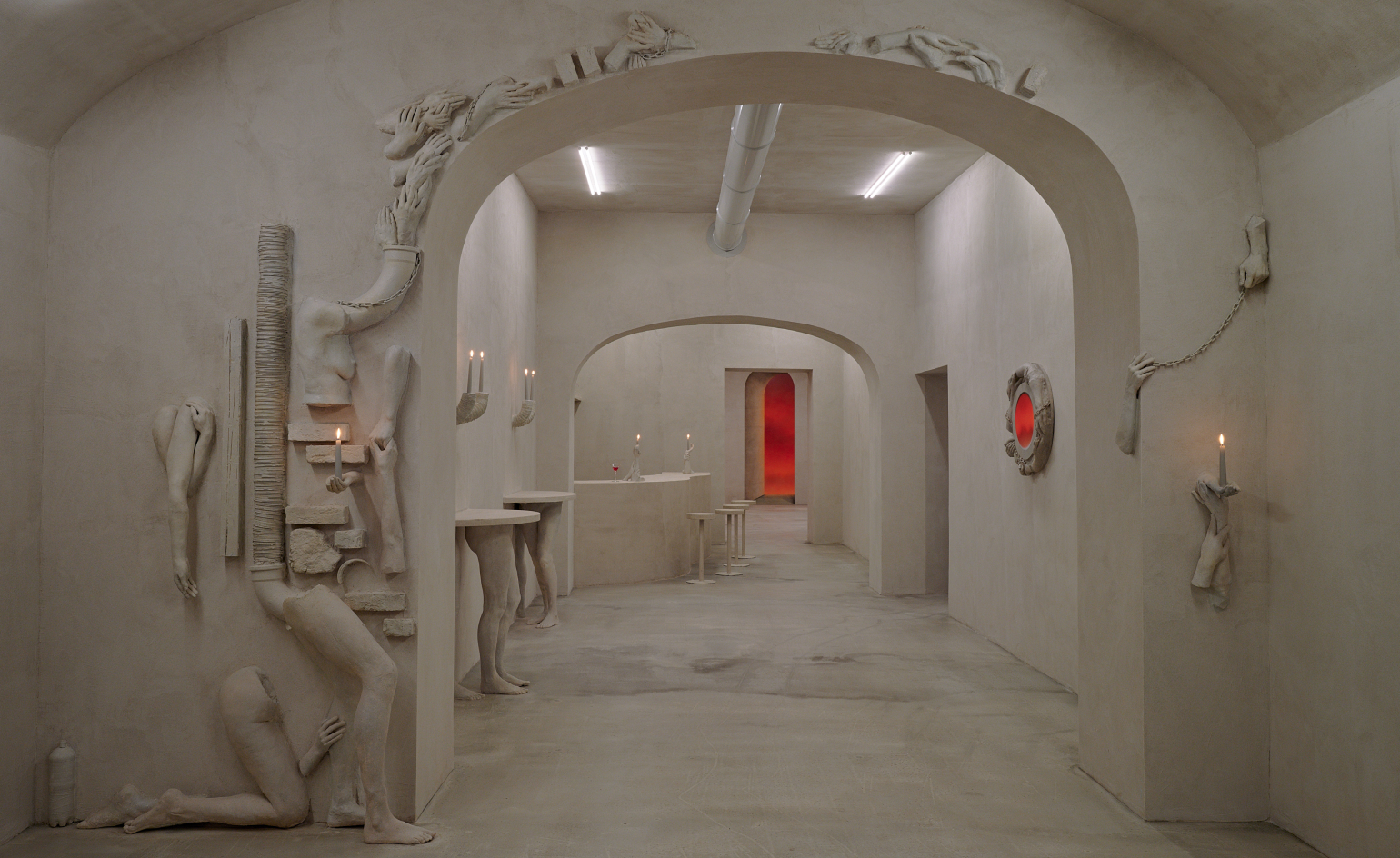 Rome’s hottest new bar is a temporary art installation – don’t miss it
Rome’s hottest new bar is a temporary art installation – don’t miss itVilla Lontana presents ‘Bar Far’, a striking exhibition by British artists Clementine Keith-Roach and Christopher Page, where nothing is what it seems
-
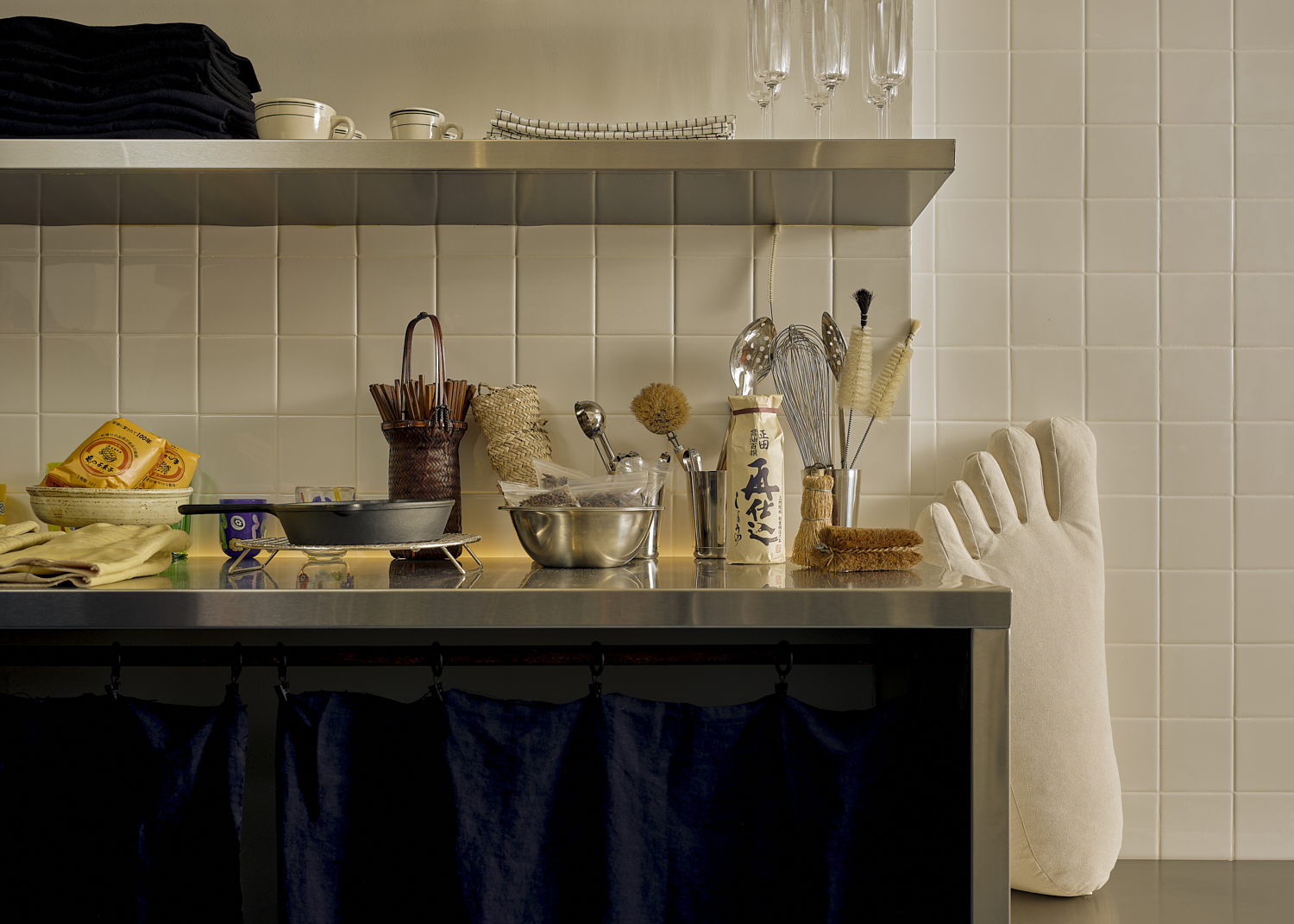 Homeware and design store Beverly’s puts down roots in New York’s Chinatown
Homeware and design store Beverly’s puts down roots in New York’s ChinatownBeverly’s was founded by Beverly Nguyen as a retail destination focused on community by supporting small business owners, creatives and craftspeople
-
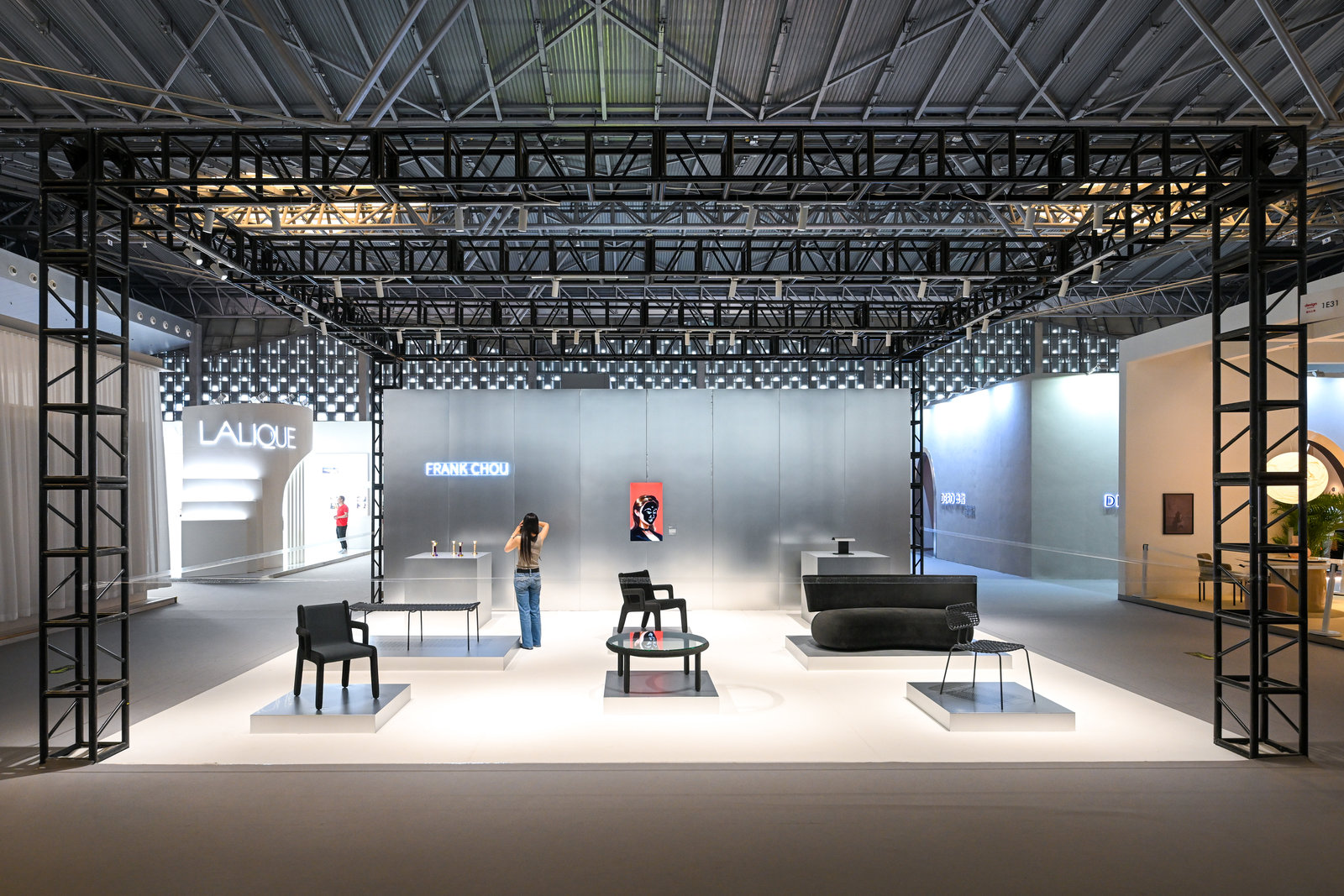 Highlights from Design Shanghai 2023: ‘Now is the golden age of Chinese design’
Highlights from Design Shanghai 2023: ‘Now is the golden age of Chinese design’Our Design Shanghai 2023 highlights, from leading Chinese designers and brands to emerging creatives
-
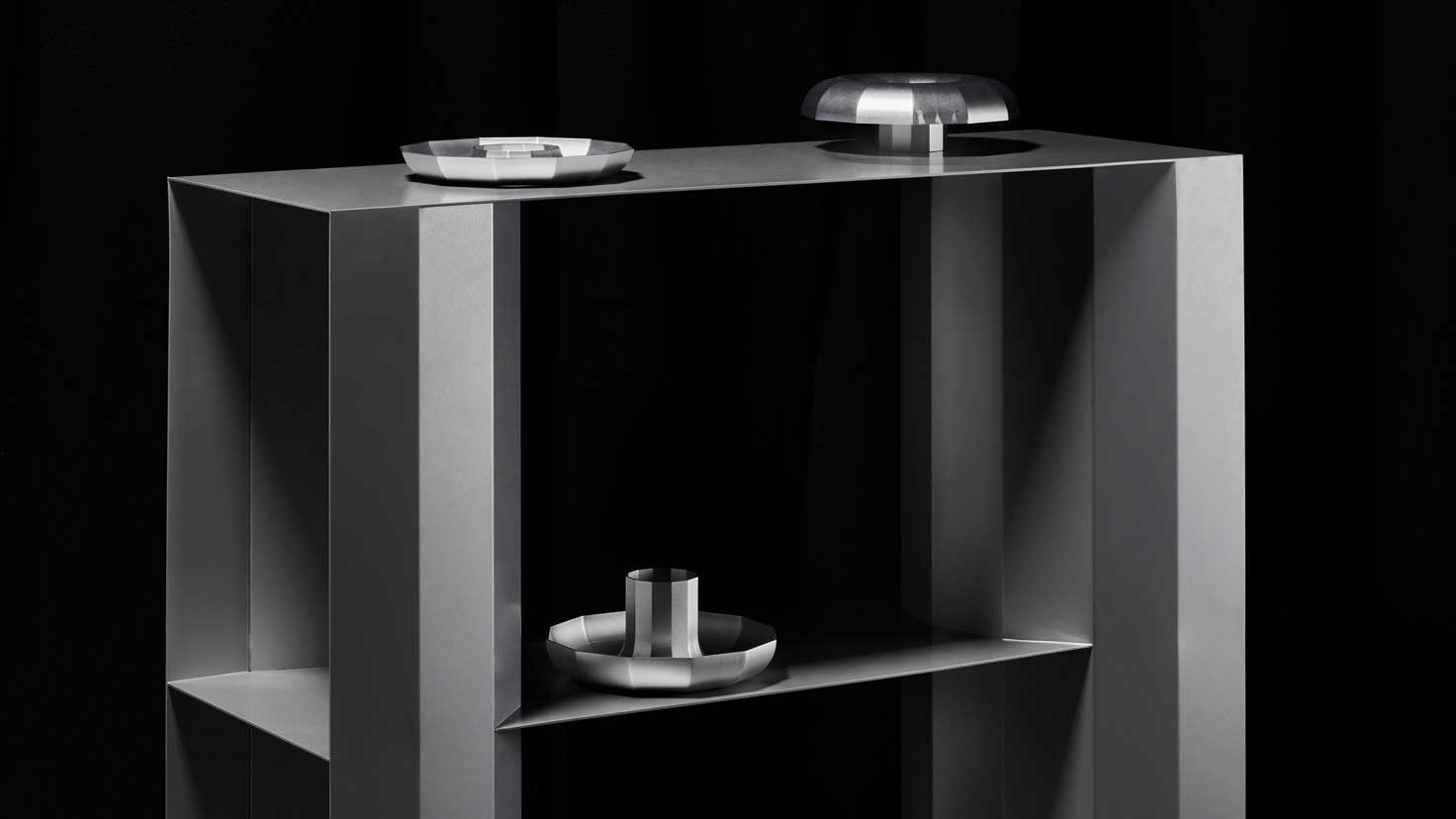 Shanghai’s MMR Studio is inspired by industrial processes and materials
Shanghai’s MMR Studio is inspired by industrial processes and materialsChinese designer Zhang Zhongyu of MMR Studio is inspired by industrial processes to create furniture and objects
-
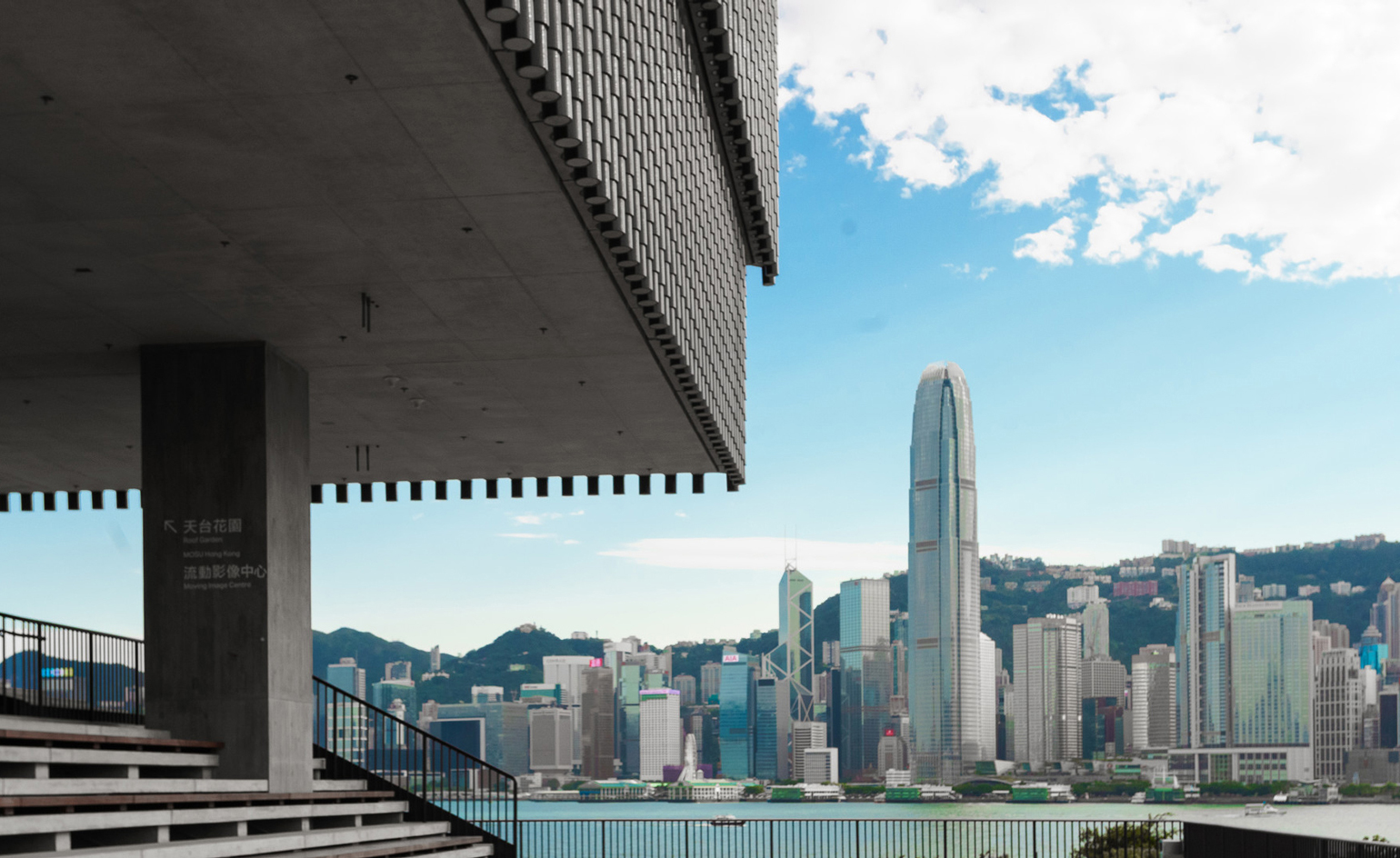 Hong Kong art scene expands its reach
Hong Kong art scene expands its reachBeyond fairs, museums and galleries, Hong Kong’s burgeoning art scene is influencing its bars, restaurants and hotels
-
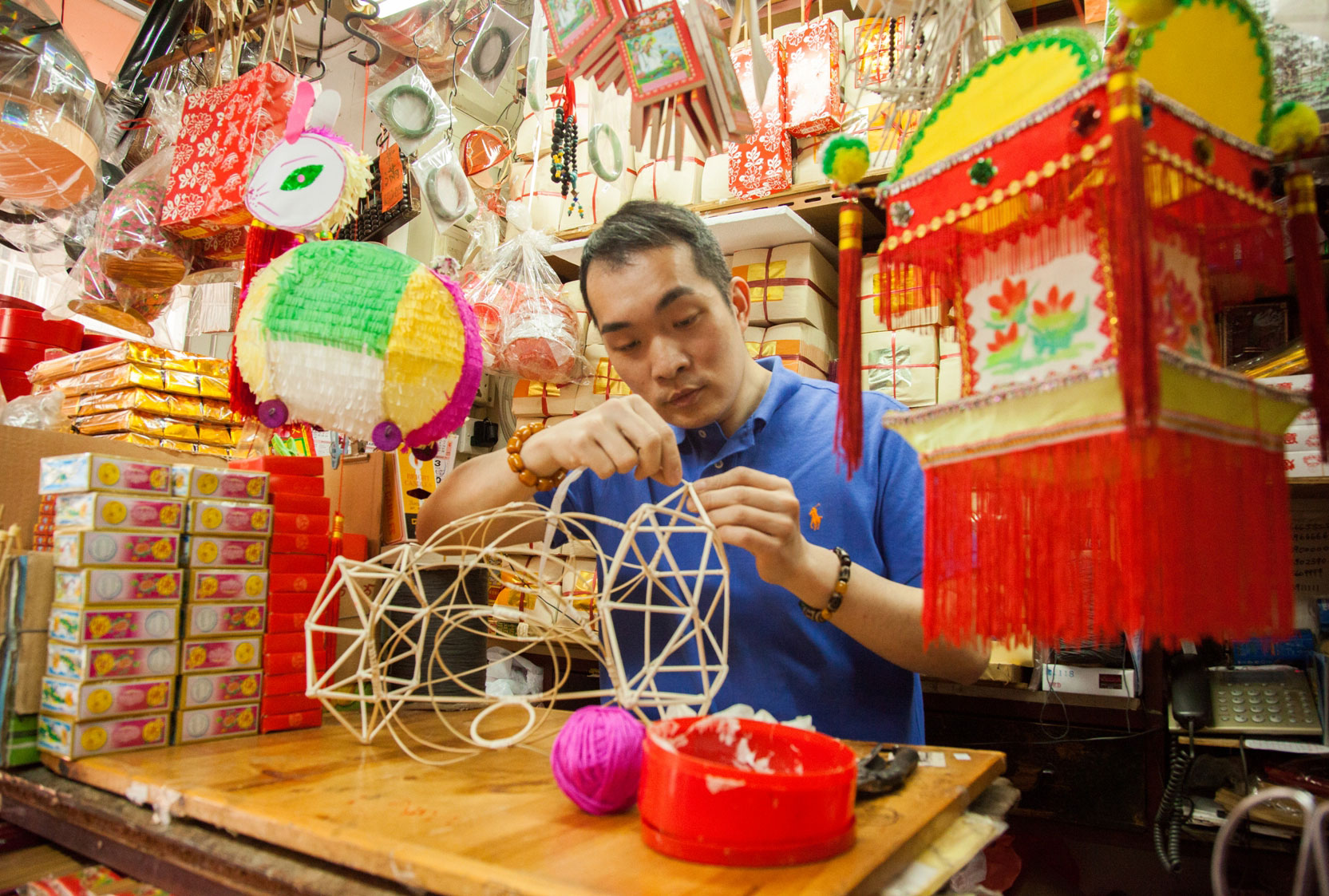 Four Hong Kong crafts embracing the future
Four Hong Kong crafts embracing the futureHong Kong has a rich craft tradition. Meet four artisans preserving historic crafts and updating them for the 21st century in unexpected ways
-
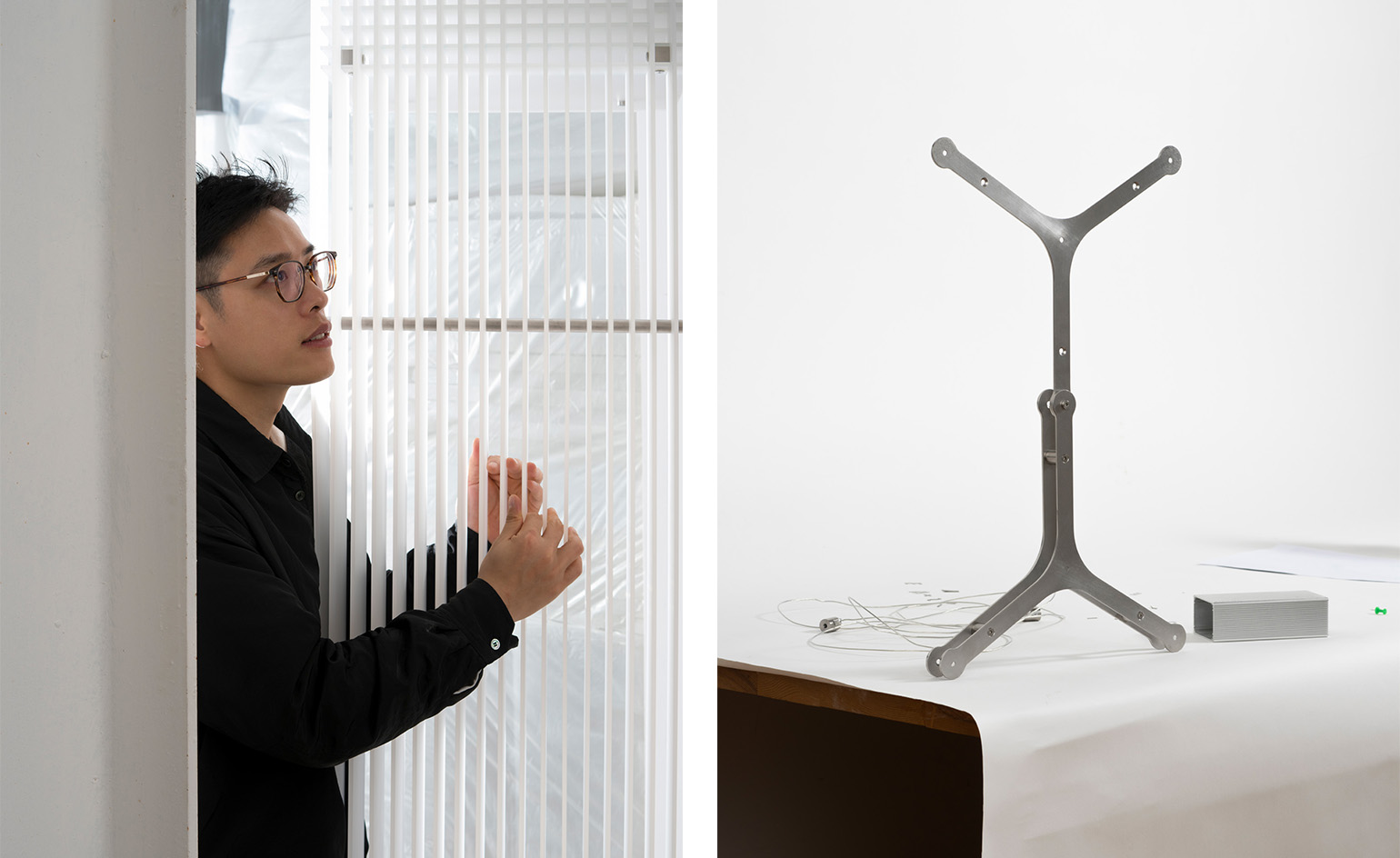 The pared-back designs of Mario Tsai
The pared-back designs of Mario TsaiMario Tsai – named by Nendo’s Oki Sato as a creative leader of the future for Wallpaper’s 25th Anniversary Issue ‘5x5’ project – talks about his experience working as a designer and entrepreneur in China, at the cusp of innovation and tradition
-
 World View: Letter from Hong Kong
World View: Letter from Hong KongThe World View series shines light on the creativity and resilience of designers around the world as they confront the challenges wrought by the Covid-19 pandemic. Working with contributors around the world, we reach out to creative talents to ponder the power of design in difficult times and share messages of hope. In Hong Kong, design leaders Michael Young, Joyce Wang, André Fu, Marisa Yiu and Adrian Cheng are turning to new approaches and philosophies for the times ahead, writes our commissioning editor TF Chan.
-
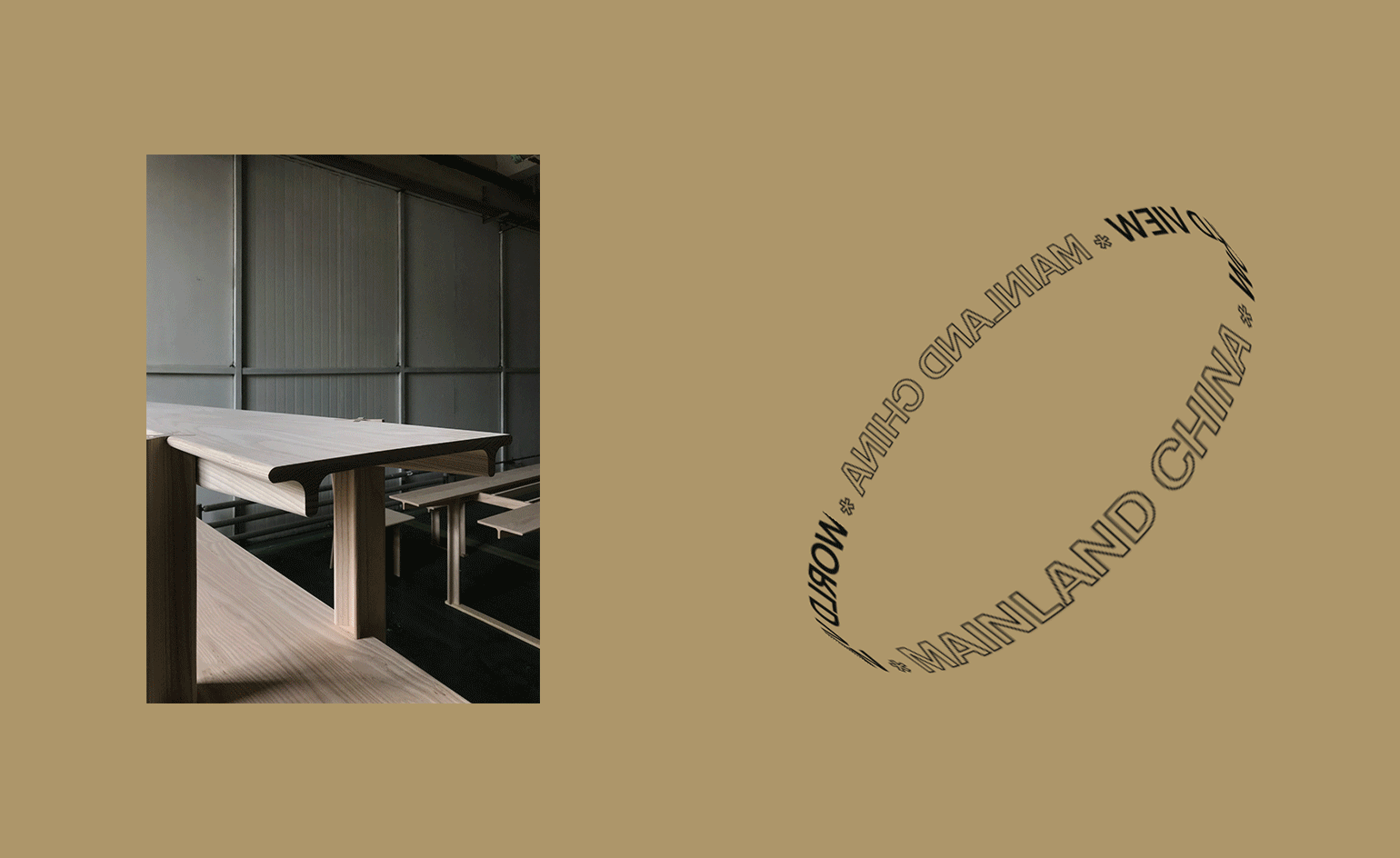 World View: Letter from Mainland China
World View: Letter from Mainland ChinaOur new series shines light on the creativity and resilience of designers around the world as they confront the challenges wrought by the Covid-19 pandemic. Working with contributing editors across eleven global territories, we reach out to creative talents to ponder the power of design in difficult times and share messages of hope. As our China editor Yoko Choy discovers across Beijing, Hangzhou and Shenzhen, small design studios and large enterprises alike are making innovative contributions to public health, and despite widespread worries, there is also cause for optimism.